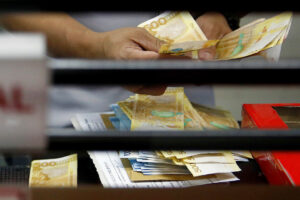Philippine lenders’ April bad loan ratio worsens
BAD LOANS of Philippine banks rose in April, bringing their nonperforming loan ratio to the highest in seven months, the central bank said on Thursday. The banking industry’s gross bad loan ratio increased to 3.41% from 3.33% in March, though it was lower than 3.93% a year earlier, data from the Bangko Sentral ng Pilipinas […]

BAD LOANS of Philippine banks rose in April, bringing their nonperforming loan ratio to the highest in seven months, the central bank said on Thursday.
The banking industry’s gross bad loan ratio increased to 3.41% from 3.33% in March, though it was lower than 3.93% a year earlier, data from the Bangko Sentral ng Pilipinas (BSP) showed.
Bad loans in April rose by 3.05% to P427.265 billion from a month earlier but fell by 4.5% from a year earlier.
Banks’ gross loan portfolio grew by 9.9% to P12.52 trillion from a year earlier and by 0.6% from a month ago.
“Rapid-fire rate hikes are starting to manifest in these numbers as servicing debt becomes more challenging with all the rate hikes,” Nicholas Antonio T. Mapa, senior economist at ING Bank N.V. Manila, said in a Viber message.
The Monetary Board has raised policy rates by 425 basis points to 6.25% since May last year. It paused its aggressive tightening cycle last month, and has signaled it would keep rates on hold until the third quarter.
The pickup in banks’ bad loans might also have to do with higher inflation and the risk of recession in the US, Michael L. Ricafort, chief economist at Rizal Commercial Banking Corp., said in a Viber message.
Inflation slowed for a fourth straight month in May to 6.1%, the lowest in a year.
Based on BSP data, past due loans rose by 4% to P516.02 billion from a year earlier. These accounted for 4.12% of borrowings, down from 4.19% a year earlier.
Restructured loans fell by 4.6% from a year earlier to P325.01 billion, cutting the ratio to 2.59%. The industry’s bad loan coverage ratio stood at 86.23%, up from 77.39% in April 2022.
“With rates elevated, we could see nonperforming loans increase in the next few months as the full impact of policy tightening takes effect,” Mr. Mapa said. — Keisha B. Ta-asan


















